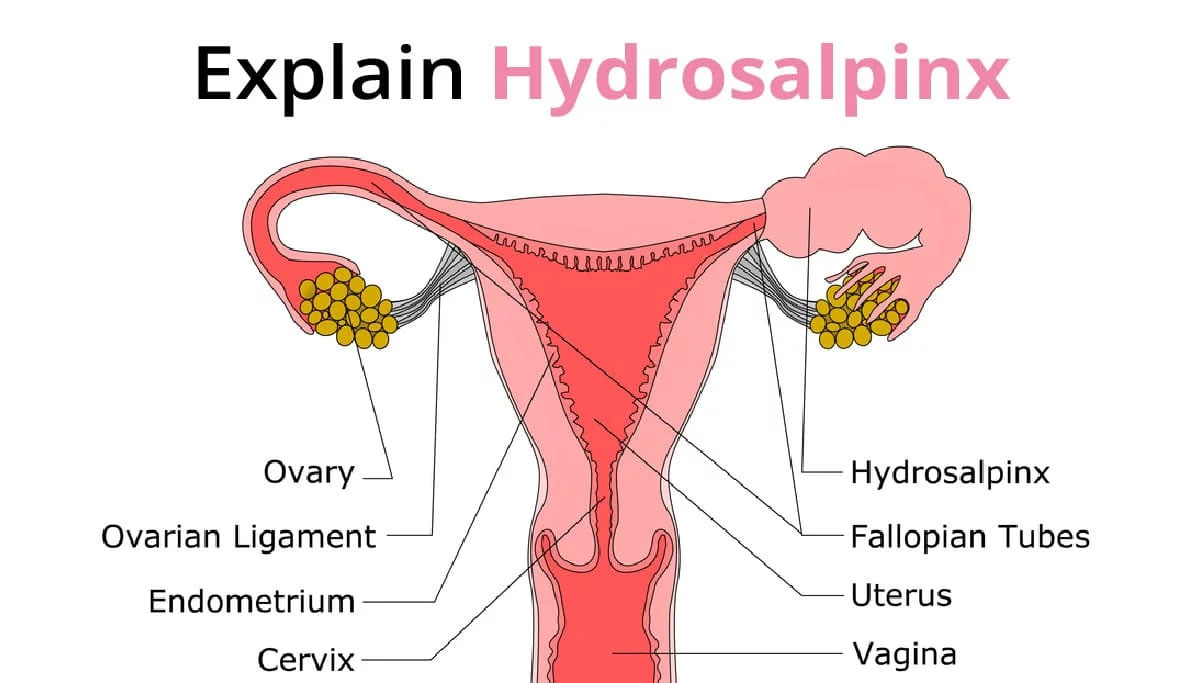
HYDROSALPINX
A hydrosalpinx is a condition wherein the fallopian tubes are blocked, resulting in a collection of fluid. Fallopian tubes connect the ovaries to the uterus. Therefore, any blockage in the fallopian tubes can upset the normal functioning of the female reproductive system. If both the fallopian tubes are affected, then the condition is known as hydrosalpinges.
The fallopian tubes are responsible for delivering the ovarian egg (ova) to the uterus during pregnancy. Therefore blocked fallopian tubes can cause infertility. It is technically possible to get pregnant with one working fallopian tube, but pregnancy rates are lower in such cases. This is because of the adhesions and irritations caused by hydrosalpinx.
CAUSES
PELVIC INFLAMMATORY DISEASE (PID) : It is an infection which affects the fallopian tubes, ovaries and uterus. PIDs are generally caused by Chlamydia and Gonorrhea. Long time untreated PID can cause hydrosalpinx.
ADHESIONS : Adhesions from previous surgeries involving the pelvic area can also cause hydrosalpinx.
APPENDICITIS BURST : Appendicitis burst may lead to infections in the pelvic area and can thus cause hydrosalpinx.
SYMPTOMS
In most of the cases, the patient may not experience any symptoms and may come to know about the condition only after diagnosis for infertility.
INFERTILITY : Infertility is a major symptom of hydrosalpinx.
PAIN & ABNORMAL DISCHARGE :
Pelvic pain and abnormal vaginal discharge are experienced in some cases.
SYMPTOMS OF THE ROOT CAUSE :The patient may experience the symptoms of the root cause, like in case of PID, she may experience pain in the lower abdominal area or motion tenderness.
DIAGNOSES
The diagnosis of hydrosalpinx may involve hysterosalpingogram (HSG), ultrasound or laparoscopy.
TRANSVAGINAL ULTRASOUND : Ultrasound is an imaging technique which uses ultrasound waves to create an image/video of the internal organs of the patient. In transvaginal ultrasound, the doctor will insert the transducer into the patient’s vagina in order to inspect the uterus with the help of the video/image on screen.
HSG : In many cases ultrasound may not be able to show the blockage. Hence to ascertain hydrosalpinx, the doctor may recommend sonohysterosalpingography. It is a procedure similar to ultrasound but in this procedure the surgeon also inserts a saline solution into the cavity of the uterus, this helps the doctor to see things which would not be possible with normal ultrasound.
LAPAROSCOPY: Diagnostic laparoscopy may help determine hydrosalpinx, as well as, rule out other conditions. Laparoscopy is a procedure in which a small & lighted instrument known as the laparoscope is inserted through small incisions made near the abdomen area. The instrument relays video to a screen which helps the doctor to inspect the uterus and fallopian tubes.
TREATMENT
The course of treatment depends on the extent of the condition and the preferences of the patient.
NEOSALPINGOSTOMY : If the blockage is small, then repairing it may be an option. In such instances, the patient can conceive naturally. The blockage is removed via a laparoscopy.
REMOVAL OF FALLOPIAN TUBES : In this procedure the fallopian tubes are removed. Hence, natural child birth is not possible. IVF – in vitro fertilization, is used in order to conceive.
